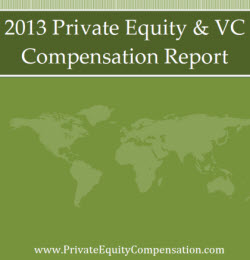The latest jobs-creation proposal presented by President Obama once again targets carried interest as a source of tax revenue keeping it at the forefront of private equity compensation discussions. Ever since it became the focus of the democrats’ insatiable desire to get the “rich” to pay their fair share of taxes, the term “carried interest” has crept into the consciousness of regular taxpayers who have, heretofore, never had any reason to understand what it is. And, with the debate over whether it should be considered as ordinary income or capital gains raging on, most people have little to go on other than what the demagogues and the evil Wall Street financiers are telling them. It helps to understand the context of carried interest before deciding which side of the fence to stand.
The context of carried interest lies in the overall structure of a private equity firm whose sole purpose is to raise capital to identify and manage assets that are invested in a portfolio of enterprises. At the management level, a general partner is responsible for raising capital and then guiding the investments towards companies that demonstrate the potential for growth which will generate a solid return. The general partner, who usually invests his or her own funds up to about 2% of the total capital raised, then seeks to attract outside investors to raise the rest of the capital. These investors become a limited partner to the fund and are allocated a share in proportion to their investment in the fund.
The general partner is compensated through an annual management fee which typically amounts to 2% of the fund’s assets. The larger portion of compensation is generated through the general partner’s share of the fund’s profit, which is called carried interest. The carried interest portion, which typically amounts to 20% of the net profits, is vested over a number of years and received as earned after that point. The private equity industry has always maintained that this is a fair compensation arrangement because the general partner invests a tremendous amount of time and resources towards building the companies in their portfolio to profitability. Much of their time is spent in developing strategy, working to improve management performance and company efficiencies, and maximizing the value of the company in preparation for its sale or initial public offering.
assets. The larger portion of compensation is generated through the general partner’s share of the fund’s profit, which is called carried interest. The carried interest portion, which typically amounts to 20% of the net profits, is vested over a number of years and received as earned after that point. The private equity industry has always maintained that this is a fair compensation arrangement because the general partner invests a tremendous amount of time and resources towards building the companies in their portfolio to profitability. Much of their time is spent in developing strategy, working to improve management performance and company efficiencies, and maximizing the value of the company in preparation for its sale or initial public offering.
In most cases, carried interest is structured in the form of equity-based carry where interest in a fund is allocated proportionately to the limited partners’ investment. From each of the limited partner’s shares, the general partner receives 20% as carry. Carry is not automatic, however, because it is only created when the fund generates profits that exceed a specified return level known as the hurdle rate. If the hurdle rate of return is not achieved, the general partner does not receive carry, although the limited partners continue to receive their proportionate share.
Carry can also be clawed-back if the fund underperforms over time. For example, if the limited partners are expecting a 10% annual return, and the fund only returns 7% over a period of time, a portion of the carry paid to the general partner could be returned to cover the deficiency. The claw-back provision, when added to the other risks that the general partner undertakes leads private equity industry advocates to their justification that carried interest is not a salary, rather it is an at-risk return on investment which is only payable based on performance achievement. It is, in fact, the primary incentive for a general partner to take uncommon risks in building profitable companies that ultimately creates wealth and jobs for the economy.
Presently, carried interest is classified under the tax code as capital gains which are taxed at the more favorable rate of 15%. The efforts of the administration to reclassify it as ordinary income will effectively double the tax paid on carried interest. Private equity advocates argue (with much support from economic historians) that the increased tax will subdue the incentive to take the kind of risk that is necessary to invest in and manage companies to profitability. The argument from the other side of the fence is that private equity and hedge fund managers who make millions are taxed at a lower rate than their assistants which isn’t fair. Those are, essentially, the two sides of the argument. Now you decide.


{ 1 trackback }